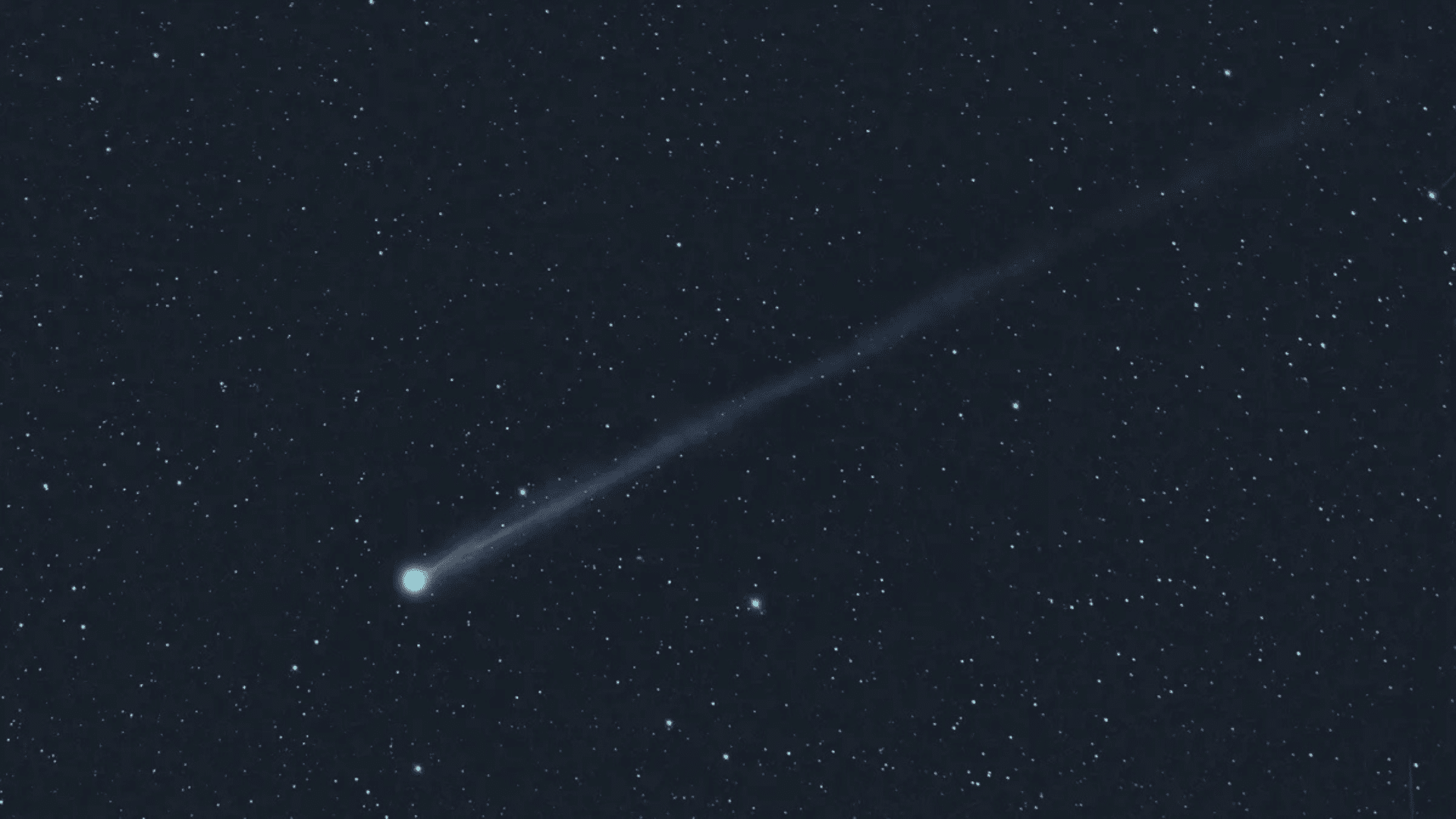A new emerald-green comet was discovered by an amateur astronomer – and you could potentially spot it from your own backyard.
Comet SWAN25F

The comet is making its way around the sun in less than a month when it could become visible to the naked eye. But those with some backyard stargazing equipment could spot the comet now.
Australian amateur astronomer Michael Mattiazzo first discovered the new comet, dubbed SWAN25F, on April 1. According to Spaceweather.com, Mattiazzo noticed the comet in photos captured by the SWAN camera on the European Space Agency’s Solar and Heliospheric Observatory (SOHO) spacecraft.
Though its existence has been confirmed by multiple astronomers since its discovery, the comet is awaiting official recognition from NASA’s Minor Planets Center. This means that what we currently know about the spaced object’s speed, orbit, size, origin, and distance is still limited.
Researchers currently believe the comet will reach perihelion—its closest point to the sun—on May 1 and be at a minimum distance of around 31 million miles from our home star. If the comet survives until this point, it may be visible during sunset. Otherwise, stargazers could observe the comet on the east-northeastern horizon just before sunrise.
The comet’s green glow is likely a result of dicarbon – a form of carbon with double-bonded atoms – which has produced a green hue in other comets. There is a high potential for spotting this comet as it has brightened from a +10 to +8 apparent magnitude since its initial discovery.
“The comet appears to be brightening quite quickly,” Nick James, the director of the comets section at the British Astronomical Association, told Spaceweather.com earlier in the week. “It is too early to predict what the peak brightness will be. We need a few more days of observations to confirm the current trend, but it should become at least a binocular object.”
Earthsky.com reported that the comet can now be seen with a telescope or stargazing binoculars. Experts predict that, as the comet approaches perihelion, its brightness could peak at +5 apparent magnitude, making it visible to the naked eye. As news of the new comet spread, many astrophotographers managed to capture striking photos of the space object.







